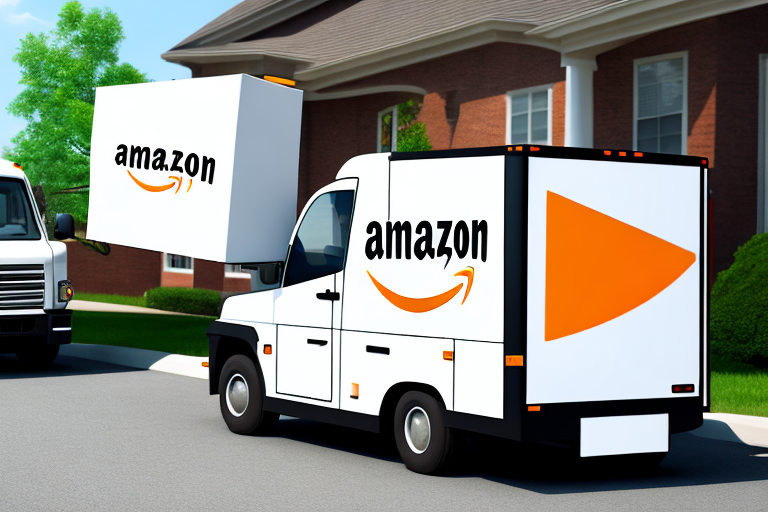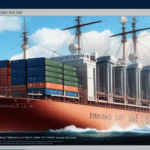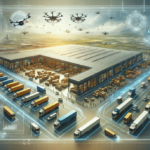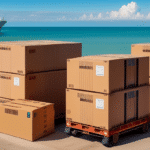How Many Amazon Packages Are Delivered Every Day?
Amazon, the world’s largest online retailer, delivers millions of packages to customers worldwide every day. While Amazon does not publicly disclose exact delivery figures, various estimates suggest that the company handles approximately 3.5 million packages daily in the United States alone. Globally, this number is significantly higher, reflecting Amazon's expansive reach and operational capacity.
Growth and Expansion of Amazon’s Delivery Network
Development of Amazon Logistics
In 2013, Amazon launched Amazon Logistics to build its proprietary delivery network, reducing reliance on traditional carriers like UPS and FedEx. This initiative has since expanded to include services such as Amazon Flex, a gig economy-style delivery platform, and Amazon Prime Air, which explores drone-based deliveries.
Global Expansion Efforts
Amazon has significantly expanded its delivery operations internationally, establishing facilities and partnerships in key markets including the United Kingdom, Germany, and Japan. In emerging markets like India, Amazon collaborates with local delivery companies to enhance its distribution network and reach a broader customer base.
Investment in Technology
Amazon continues to invest heavily in technology to streamline its delivery processes. Innovations such as real-time package tracking, route optimization algorithms, and the use of robotics in fulfillment centers have been pivotal in enhancing delivery efficiency.
Amazon’s Delivery Process and Technology
Order Fulfillment and Processing
Amazon’s delivery process begins when a customer places an order, which is then transmitted to a fulfillment center. Here, items are picked, packed, and labeled before being handed over to carriers for final delivery. Customers can monitor their package status through the Amazon website or mobile app.
Advanced Automation and Machine Learning
Utilizing machine learning algorithms and automation, Amazon optimizes its fulfillment centers to increase speed and accuracy. Automated systems manage inventory, predict demand, and streamline the packing process, ensuring efficient order processing and reduced delivery times.
Diverse Delivery Options
Amazon offers a variety of delivery options to cater to different customer needs, including:
- Same-day delivery
- Two-day shipping through Amazon Prime
- One-hour delivery in select urban areas
- Delivery to Amazon Lockers and pickup locations for added convenience
Environmental and Economic Impacts of Amazon Deliveries
Environmental Concerns
The rapid growth of Amazon’s delivery network has raised environmental concerns, particularly regarding carbon emissions from transportation and the extensive use of packaging materials. In response, Amazon has pledged to achieve net-zero carbon by 2040 and is investing in electric delivery vehicles and renewable energy projects (Amazon Sustainability).
Economic Contributions
Amazon’s delivery operations significantly impact local economies by creating jobs in logistics, dispatch, and technology sectors. Programs like Amazon Delivery Service Partners empower entrepreneurs to start their own delivery businesses, further stimulating economic growth.
Challenges and Solutions in Amazon’s Package Deliveries
Ensuring Timely Deliveries
Maintaining timely deliveries, especially during peak seasons like holidays, poses a significant challenge. Amazon addresses this by expanding its fulfillment infrastructure and leveraging automation and machine learning to enhance delivery efficiency.
Addressing Package Theft
Package theft, particularly in urban areas, is a growing concern. Amazon has implemented several measures to mitigate this issue, including:
- Secure delivery lockers
- In-home delivery options
- Photo confirmation of deliveries
Adapting to the COVID-19 Pandemic
The COVID-19 pandemic significantly increased the demand for online shopping, putting additional pressure on Amazon’s delivery network. In response, Amazon hired additional delivery drivers, expanded fulfillment center capacities, and enhanced safety protocols to ensure uninterrupted service (Statista).
Future Trends in Amazon’s Delivery Services
Adoption of Autonomous Technologies
Amazon is exploring the use of drones and autonomous delivery vehicles to further reduce delivery times and costs. The company's Prime Air drones are designed to deliver small packages within 30 minutes, enhancing the speed and efficiency of last-mile deliveries.
Integration of Artificial Intelligence
Artificial Intelligence (AI) and machine learning are integral to optimizing delivery routes, predicting demand, and managing inventory. These technologies enable Amazon to anticipate customer needs and enhance the overall delivery experience.
Commitment to Sustainability
Amazon’s future delivery strategies are increasingly focused on sustainability. Initiatives include expanding the use of electric vehicles, utilizing renewable energy sources, and reducing packaging waste through innovative materials and recycling programs.
Customer Satisfaction with Amazon’s Delivery Services
High Levels of Customer Satisfaction
Amazon is renowned for its focus on customer satisfaction, particularly regarding delivery services. Features like reliable tracking, diverse delivery options, and prompt customer support contribute to positive customer experiences.
Continuous Improvement Based on Feedback
Amazon actively solicits and responds to customer feedback to improve its delivery services. Innovations such as Amazon Lockers and Amazon Hub have been introduced to offer more flexible and secure delivery options based on customer needs.
Conclusion
Amazon delivers millions of packages daily, underpinned by a robust and continually evolving delivery network. Through significant investments in technology, sustainability, and customer-centric solutions, Amazon addresses the challenges of timely delivery, package security, and environmental impact. As the e-commerce landscape grows, Amazon remains at the forefront, shaping the future of package deliveries with innovations and strategic expansions. The company's commitment to efficiency, sustainability, and customer satisfaction ensures its dominant position in the global delivery market for years to come.




















